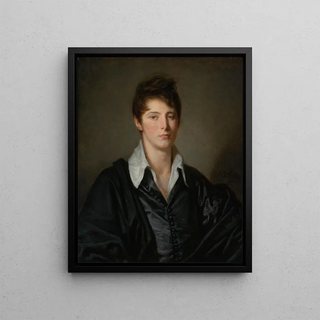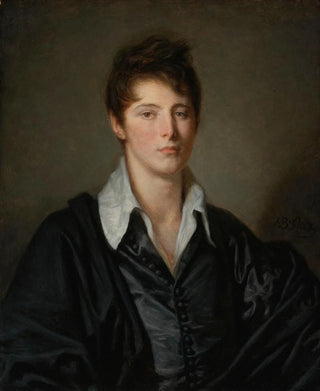Art print | Portrait of Florentius Josèphe Van Ertborn - Jean-Baptiste Greuze


View from behind

Frame (optional)
Portrait of Florentius Josèphe Van Ertborn - Jean-Baptiste Greuze – Engaging Introduction
The "Portrait of Florentius Josèphe Van Ertborn" by Jean-Baptiste Greuze is a work that transcends the simple frame of a portrait to become a true ode to human sensitivity. Created in the 18th century, this iconic piece showcases Greuze's skill in capturing the complexity of human emotions. Through the eyes of Florentius Josèphe Van Ertborn, a man of a certain social standing, the artist depicts not only a face but also a story, a personality, and an era. This portrait, rich in detail and nuance, offers the viewer a fascinating glimpse into the life and values of its time, while inviting reflection on identity and representation.
Style and uniqueness of the work
Greuze's style is distinguished by its intimate and realistic approach. Unlike other artists of his time who favored grandiose and idealized compositions, Greuze chooses to focus on the psychology of his subjects. In the portrait of Van Ertborn, the delicate and expressive features of the face are highlighted, revealing an emotional depth that touches the heart. Light plays a fundamental role in this piece, emphasizing the contours of the face and creating a warm and engaging atmosphere. The details of clothing and accessories, carefully painted, add an extra dimension to the composition, demonstrating the artist's technical mastery. Every element, from the contemplative gaze to the texture of the fabrics, contributes to making this portrait a unique and memorable piece.
The artist and his influence
Jean-Baptiste Greuze, born in 1725, is a major figure of the 18th-century artistic movement, often associated with the rococo style. His work, although sometimes overshadowed by contemporaries like François Boucher, possesses an undeniable originality that allows him to stand out. Greuze was able, through his portraits and genre scenes, to explore themes of morality and daily life, while incorporating a psychological dimension into his representations. His influence extends beyond his era, inspiring generations of artists who sought to capture the essence of the h

Matte finish

View from behind

Frame (optional)
Portrait of Florentius Josèphe Van Ertborn - Jean-Baptiste Greuze – Engaging Introduction
The "Portrait of Florentius Josèphe Van Ertborn" by Jean-Baptiste Greuze is a work that transcends the simple frame of a portrait to become a true ode to human sensitivity. Created in the 18th century, this iconic piece showcases Greuze's skill in capturing the complexity of human emotions. Through the eyes of Florentius Josèphe Van Ertborn, a man of a certain social standing, the artist depicts not only a face but also a story, a personality, and an era. This portrait, rich in detail and nuance, offers the viewer a fascinating glimpse into the life and values of its time, while inviting reflection on identity and representation.
Style and uniqueness of the work
Greuze's style is distinguished by its intimate and realistic approach. Unlike other artists of his time who favored grandiose and idealized compositions, Greuze chooses to focus on the psychology of his subjects. In the portrait of Van Ertborn, the delicate and expressive features of the face are highlighted, revealing an emotional depth that touches the heart. Light plays a fundamental role in this piece, emphasizing the contours of the face and creating a warm and engaging atmosphere. The details of clothing and accessories, carefully painted, add an extra dimension to the composition, demonstrating the artist's technical mastery. Every element, from the contemplative gaze to the texture of the fabrics, contributes to making this portrait a unique and memorable piece.
The artist and his influence
Jean-Baptiste Greuze, born in 1725, is a major figure of the 18th-century artistic movement, often associated with the rococo style. His work, although sometimes overshadowed by contemporaries like François Boucher, possesses an undeniable originality that allows him to stand out. Greuze was able, through his portraits and genre scenes, to explore themes of morality and daily life, while incorporating a psychological dimension into his representations. His influence extends beyond his era, inspiring generations of artists who sought to capture the essence of the h






